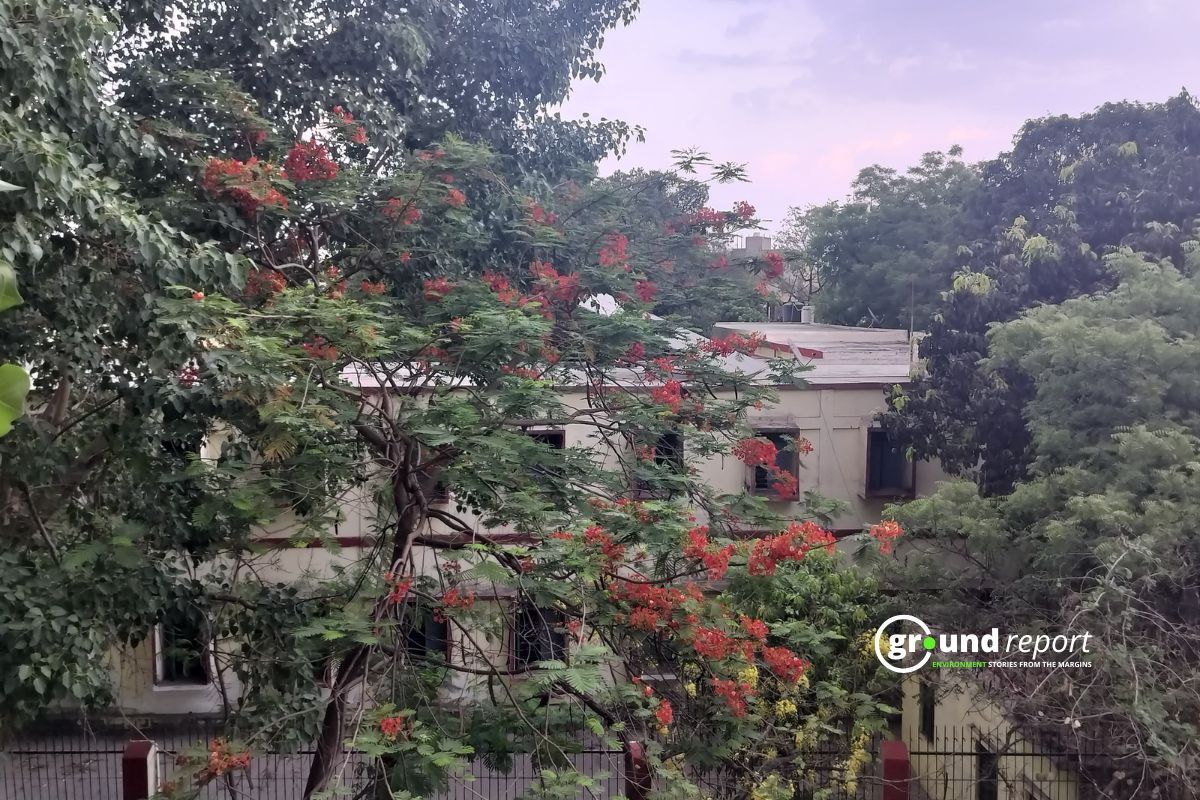Lallan Selukar, a tribal resident of Bighwa village in the west forest division of Betul district of Madhya Pradesh, still shivers when he remembers the forest fire incident that happened two years ago.
“I remember very well, in the second or third week of April that year, the forest fire reached our village and the fire was just 100 meters away from my house. Those three days were so terrible, I can never forget them.”
Selukar’s family relies on collecting minor forest produce for their livelihood. However, annual summer forest fires in the Chicholi range severely impact their work and income. These fires prevent villagers from gathering valuable non-timber forest products like Mahua, Tendu leaves, Amla, and honey. Consequently, Selukar and his community face significant economic losses, highlighting the direct link between forest health and local livelihoods.
Forest fires impacts livelihood
Madhya Pradesh boasts India’s largest forest area and highest Scheduled Tribe population. Key tribal communities like Gond, Baiga, and Korku inhabit these forests.
TRIFED reports that over 75% of tribals in Madhya Pradesh, Odisha, and Andhra Pradesh rely on forest produce for livelihood. However, forest fires pose a significant threat.
The Indian Forest Status Report 2021 reveals Odisha, Madhya Pradesh, and Chhattisgarh as the top three states affected by forest fires. These incidents jeopardise tribal communities’ access to food, medicine, and economic resources. As a result, forest dwellers face mounting challenges to their traditional way of life and are increasingly forced to seek alternative sources of income. This situation highlights the critical link between forest conservation and tribal welfare in India.
Every year from March to April, Mahua flowers fall from the trees. People of the tribal community go to the forests with their families at this time to collect flowers. Selukar says that
“We go to the forest before sunrise. In the greed to collect as many Mahua flowers as possible and to prevent the flowers from getting spoiled, we used to clear the land around the trees by lighting small fires under the trees, so that we could collect Mahua comfortably and in large numbers.”
He further says, “I thought more Mahua meant more money. But I realized this practice of clearing land with fire was harming not just me but also the forest’s vegetation and wildlife.”
Taking his point further, his wife Durgavati Bai says,
“Since we have come to know that the practice of clearing the land by setting fire is causing harm, we have now stopped doing it.”
Now they use green nets, sheets, etc. to collect Mahua flowers.
Sitting next to her, Kulwanti Korku (34) explains, “Now we tie nets above ground under Mahua trees, collecting flowers before sunset.” Shyama Tai (34) from Sawalmendha Forest adds,
“Green nets prevent flowers from breaking when they fall. This preserves quality and increases our earnings.”
According to Praful Fulzele, Chief Forest Conservator of Betul district, the MP Forest Department started the Ecosystem Service Improvement Project in Betul in the year 2020 to prevent incidents of forest fires and to conserve biodiversity. Under this project, green nets were distributed to the tribals for free, and through them, they were trained to collect Mahua flowers. This project helped in reducing forest fires to a great extent.
Honey collection: a fiery forest threat
DFO Vijayantam TR of South Forest Division, Betul district, explains that tribal traditions included setting fires to drive away bees for honey collection. To counter this, villagers received training in Bhopal and were given honey extraction kits with safety equipment.
Ramcharan, 34, from Parsapani village, shares his experience: “We used to light fires to chase away bees during honey collection in May and June. Often, these fires spread uncontrollably. After learning about the damage, we’ve stopped this practice.”
He adds, “Now, using the forest department’s honey collection kit, we extract honey safely. This has increased our annual earnings to 40–50 thousand rupees.”
Betul district’s forests have been safe from fire for two years
Varun Yadav, DFO of Betul’s West Forest Division, reports that 88 out of 133 beats across 5 ranges were fire-sensitive, covering 72% of the division’s 95,000-hectare area. To address increasing fire incidents, Yadav conducted ground-level consultations with local stakeholders, including shepherds, forest protection committees, and forest staff.
The findings revealed that villagers often set fires to deter predators, collect honey, clear stubble, and promote tendu leaf and grass growth. These fires, spread by wind, often became uncontrollable.
In response, the division implemented joint forest management programs and launched public awareness campaigns to educate villagers about fire risks and promote sustainable forest practices.
DFO Varun Yadav elaborates on the West Forest Division’s fire prevention strategy: “We conducted extensive outreach through street meetings and audio-visual presentations, educating people about fire-related forest damage. In four months, 166 forest committees held 748 fire safety meetings. We also established specialized firefighting forces in each range, equipped with modern tools like fire blowers, line lighting, and watch towers.”

The results were impressive. “These joint forest management efforts have controlled nearly 99% of fire incidents,” Yadav reports. The statistics support his claim:
-
2021: 1,299 fires, damaging 478 hectares
-
2022: 765 fires, damaging 338 hectares
-
2023: 55 fires, damaging 45 ha
-
2024: 12 fires, damaging 9 ha
This remarkable progress earned the West Forest Division state-level recognition, ranking first in forest fire prevention. They were honored on August 15, 2024. The previous year, Betul’s South Forest Division claimed the top spot and continues to perform well.
These achievements highlight the effectiveness of community engagement and modern firefighting techniques in forest conservation.
Engaging youth in conservation efforts
DFO Varun Yadav emphasizes youth engagement through competitions, sports, and training to foster forest protection. Deevilal Baiga, 60, from Ghorpad village, notes that environmental challenges have distanced younger generations from forest work. Sitaram adds that a devastating fire four years ago led to youth disengagement. However, there’s a positive shift, with young people now actively participating in fire prevention.
DFO Yadav observes, “The younger generation is becoming more aware of forest conservation and is quick to report incidents.”
Record Tendu & Mahua Exports
DFO Vijayantam TR reports a significant reduction in forest fires over the past two years, crediting tribal involvement. This has yielded tangible benefits:
Betul district achieved record tendu leaf collection, surpassing the South Forest Division’s target of 9,929 standard bags by 14%, collecting 11,361 bags.
The MP Minor Forest Produce Federation has expanded Mahua exports. Last year, 2,000 quintals were exported, including 500 from Betul. This year’s target is 4,000 quintals.
These successes demonstrate how community-level efforts effectively combat forest fires, a growing global concern due to climate change. The collaboration between the Forest Department and local communities in Betul serves as a model for sustainable forest management, balancing conservation with economic opportunities for tribal communities.
Support us to keep independent environmental journalism alive in India.
Keep Reading
The costliest water from Narmada is putting a financial burden on Indore
Indore’s Ramsar site Sirpur has an STP constructed almost on the lake
Indore Reviving Historic Lakes to Combat Water Crisis, Hurdles Remain
Indore’s residential society saves Rs 5 lakh a month, through rainwater harvesting
Follow Ground Report on X, Instagram and Facebook for environmental and underreported stories from the margins. Give us feedback on our email id greport2018@gmail.com.
Don’t forget to Subscribe to our weekly newsletter, Join our community on WhatsApp, and Follow our YouTube Channel for video stories.













